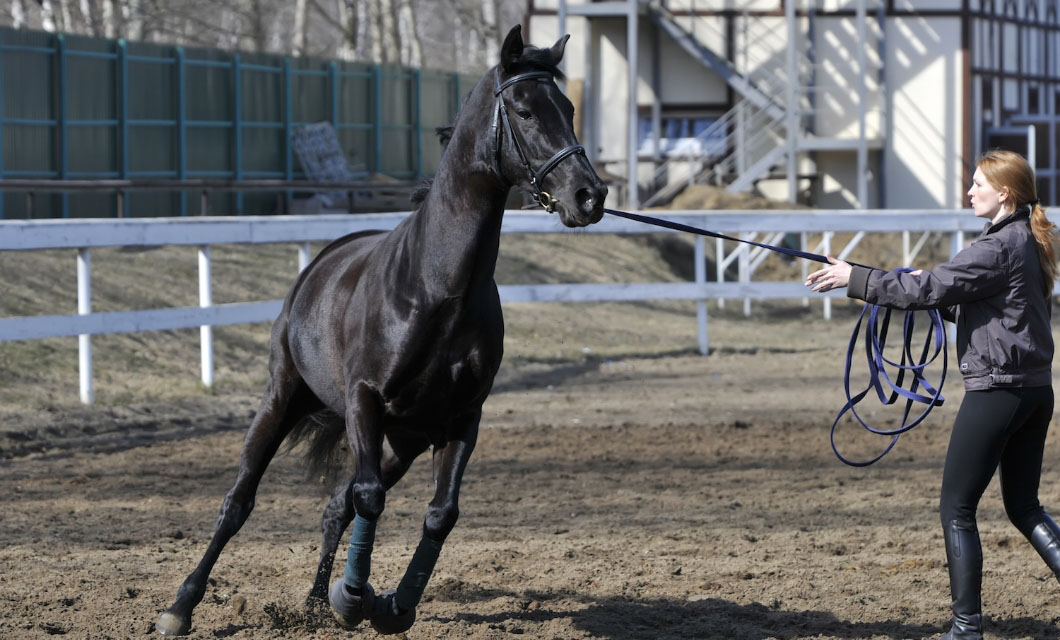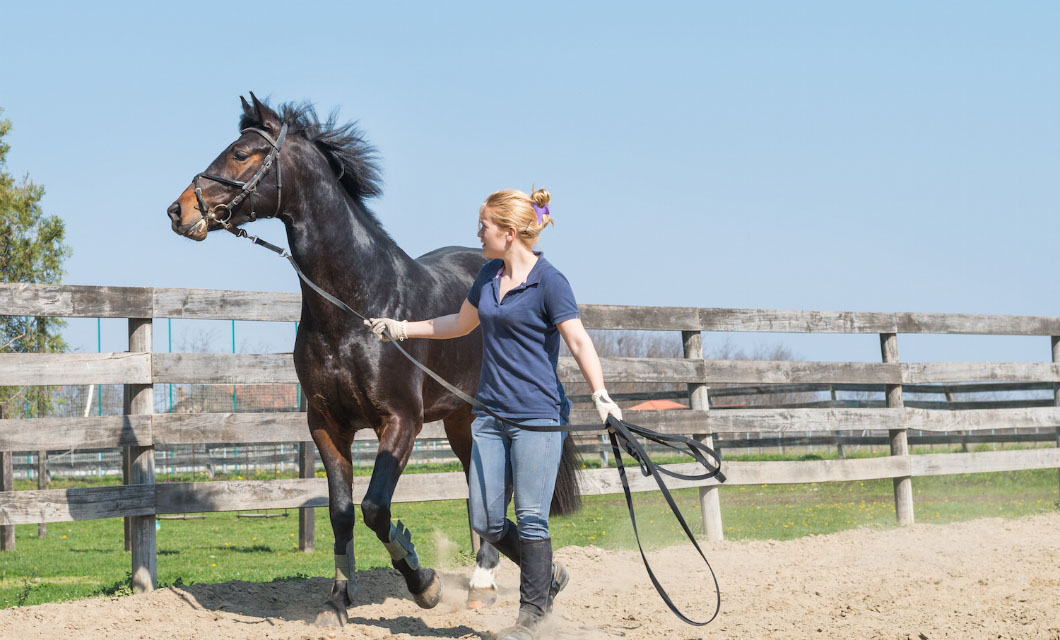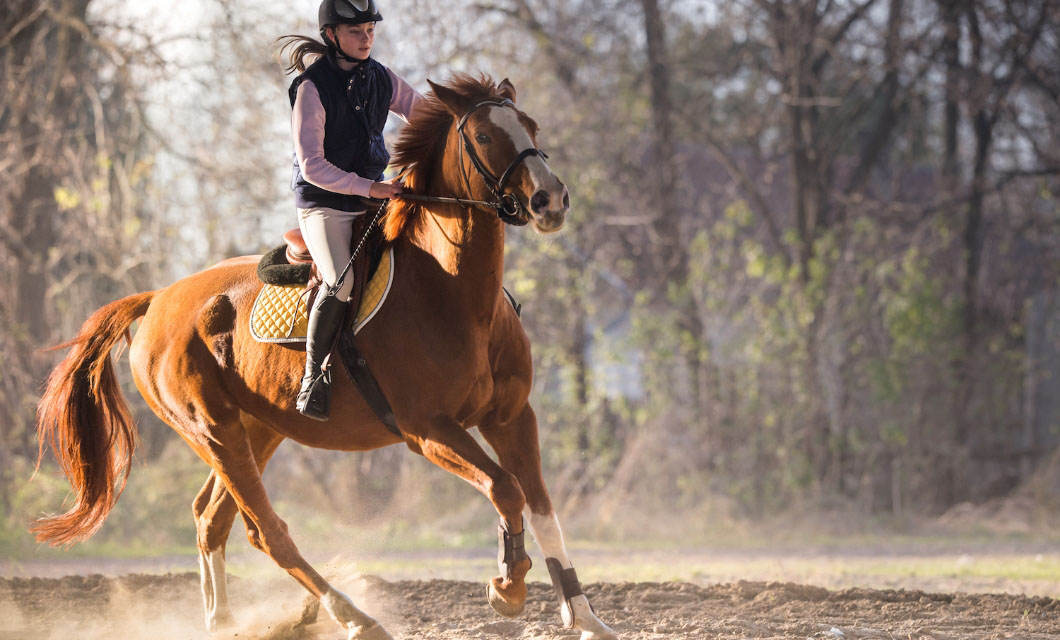How Fit Is Your Horse?
Is your horse fit for the competition that will soon take over the tracks?

With horse race, show jumping and almost all equine activities getting back to track, it is time that you get your horses ready. If your horses have had a long rest and now are out of shape, it is advised to start with a lot of walks. Also, we bring to you four ways in which you can get your horses competition-ready.
1. Lunging
You shouldn’t allow lunges five times a week or for longer than 20-30 minutes, depending on the horse and their current fitness level. Done correctly, lunging once or twice a week can be a very useful tool in developing fitness. Lunge work can be useful for developing the muscles that go under the saddle without the weight of a rider, and you can add poles or transitions to keep the work varied and up the fitness level.

2. Interval Training
Interval training is the eventer’s best friend, but that doesn’t mean it can’t be put to good use by riders in other disciplines. The idea is to replace long, low-intensity sessions with rides which are short in duration but work the horse hard by interspersing short bursts of high-intensity work in canter followed by a period of rest in walks.

3. Gymnastics and Poles
Even if you try to avoid leaving the ground in any way, polework and gymnastics can be handy for improving a horse’s fitness. You don’t have to jump big to get your horse fit, so keep the jumps low, which will help avoid strain too.
4. Hacking
Going on long hacks can be a great way to build your horse’s fitness without having to drill them in the school. As with anything, it’s important to build up to long, fast rides gradually but even at a walk, an hour of hacking can make a huge difference to an unfit horse.

*Information and image source: FEI
Looking After The Horses With The Pros
Equestrian and Arjuna Awardee Fouaad Mirza says: “Horses need to be exercised or have access to a paddock where they can perform exercises of free choice. Restricting them to the stable may trigger problems, from colic to laminitis to injury or development of bad stable vices through sheer boredom.”
Mirza talks of basic care: “The basics like feeding, watering, grooming, cleaning the stable and light exercise are essential for the horses’ well-being. Riding schools, training establishments and stud farms should safeguard their staff by making them reside on the premises and restricting their contact outside to the maximum possible. If their staff do not live on the premises, it would be good to have them work in shifts to ensure that if a staff member or groom should, unfortunately, contract the virus, there's always a healthy shift of professionals to pick up the slack."
Nick Verlies, Show-jumper from Belgium says: "The biggest obstacles for the moment are to not to over-train your horses, to not lose your motivation and to keep your horses’ mental health high. So, I try to focus on flat work, certainly for the older horses. Keep in mind that a good flexible, well-schooled horse is the base for every good jumping routine. This is the time to work on your technique. During these technique-trainings, I focus on half-turns, straightening the horse, travers, renvers, shoulder control, and so on."
He adds: "If you can’t ride anymore, keep your horses moving on a low level: increase field time, add extra walks by hand, treadmill, aqua-trainer. Lounging the horse at a quiet pace to keep up the stamina is a good idea, but do not over-train."
The Expert View
Expert farrier Bernard Duvernay says: “The diet of the horses has to be adapted for low exercise time. Please do not overfeed them, reduce the rich, energetic food with a high percentage of protein. Horses that have a tendency to be fat are at high risk to develop laminitis when we stop or reduce their exercises.” Furthermore, he says: “Exercise is very important for the health of the horses, and their feet. Leave them in a paddock a few hours daily or exercise them but please don’t leave them in the stables for days without any movements.”
Duvernay elaborates on the importance of keeping the condition of the feet in good shape. “Horses’ feet have to be kept in good condition. All sports activities are limited or stopped, nevertheless we have to keep the horses in good health, and the feet should not be neglected. If your horse has good feet and he is not exercising much, he can easily be kept without shoes. The trimming is the most important, keep the balance of the feet, keep them trimmed every four weeks and when their walls break a little, give a little rasp to prevent the wall from being too damaged."

